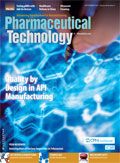Extending the Scope of Pharmacovigilance Comes at a Price
As the pharmacovigilance infrastructure becomes more entrenched in Europe, drug manufacturers are beginning to feel the burden of its high cost.
Pharmacovigilance controls are becoming firmly embedded in the European Union’s post-authorisation regulatory system with the European Medicines Agency (EMA) acting as the pivot for an EU-wide network of agencies monitoring medicines throughout their market lifespan. The new pharmacovigilance activities stemming from the EU legislation (1-3), the first stage of which was approved four years ago, relate mainly to the reporting of adverse drug reactions (ADRs) for the detection of safety and efficacy defects. They also cover quality problems such as deficiencies in manufacturing, inadequacies in formulations, including excipients, as well as faulty drug-delivery technologies.
EMA claims that the new pharmacovigilance legislation, implemented in mid-2012 in both the EU and the two non-EU countries of Norway and Iceland, has “brought about the biggest change to the legal framework for human medicines” in Europe since the creation of the central agency itself in 1995 (4). EMA’s Pharmacovigilance Risk Assessment Committee (PRAC) has already “made great strides towards a new era in protecting public health,” according to its chair June Raine (4). Nevertheless, as the pharmacovigilance infrastructure gradually becomes more entrenched in Europe, drug manufacturers and other marketing authorization holders (MAHs) are complaining that they are shouldering an unfair proportion of its high costs.
The cost of pharmacovigilance Pharmacovigilance can be particularly expensive for developers and producers of biologics and biosimilars that are making up a growing proportion of new market entrants, while being burdened with a more rigorous post-authorization regime than that for small-molecule medicines. Producers of genericmedicines are also unhappy. With a growing share of the EU market due to patent expiration of blockbuster drugs and a decline in new chemical entities, generic-drug manufacturers are having to carry a larger burden of the costs and fees for pharmacovigilance initiatives.
“It is vital that costs associated with regulatory processes do not become a barrier to developing and improving generics and biosimilar products or even to maintaining the product in the market,” said Beata Stepniewska, deputy director general of the European Generic Medicines Association (EGA), with reference to pharmacovigilance and other new legislation, at a recent regulatory affairs conference (5).
While stressing their support for an effective pharmacovigilance system to ensure patient safety, leading European pharmaceutical trade associations protested earlier this year about the lack of “proportionality and transparency” in the fees mechanism for paying EMA for pharmacovigilance activities. In a joint press release (6), the associations, including the European Federation of Pharmaceutical Industries and Associations (EFPIA), EGA and the European Association of Bio-Industries (EuropaBio), claimed that prior to the adoption of the pharmacovigilance legislation, the European Commission had been expecting annual savings of €145 million. Instead, the financial burden of the legislation on the industry has been increasing. Given that the mission of EMA and the regulatory agencies or National Competent Authorities (NCAs) in the EU’s 28 member states is to safeguard public health, the pharmacovigilance costs to industry should be partly covered by public-sector funds, the associations argued.
The industry has been pressing the commission for a dialogue on the issue that would aim to establish a fees system based on the principles of fairness and cost-effectiveness. Instead, the commission has been stressing its belief that the fees are both justifiable and transparent. A preamble to an EU regulation, published in June 2014 on the latest set of fees for pharmacovigilance work by EMA on behalf of NCAs, states that fees should be at a level that “avoids deficit and a significant accumulation of surplus and should be revised when this is not the case” (7).
Some types of medicines and MAH groups are benefiting from lower fees. Generic medicines are subject to reduced fees because of their well-established safety profiles. Small- and medium-sized enterprises (SMEs) are paying less as well.
For pharmacovigilance work by EMA on centrally approved products and to ensure harmonization of safety standards on medicines licensed by the member states, fees are fixed by EU regulation. The member states themselves set the fees for pharmacovigilance activities that are entirely the responsibility of the NCAs. At the EMA level, fees are incurred for individual pharmacovigilance procedures that can affect some MAHs more than others and are imposed annually to pay for functions that are considered to benefit all authorisation holders, such as the running of the Eudravigilance database (8) for information on all ADRs.
Pharmacovigilance procedures and fees
There are three main procedures. Periodic safety reports (PSURs) are risk-benefit medicine evaluations submitted at stipulated intervals by MAHs. Post-authorization safety studies (PASS)characterize safety hazards or the effectiveness of risk management activities. The third is referrals to resolve concerns about the benefit-risk balance of individual medicines or combinations of them and disagreements among member states.
Under the latest set of published fees for pharmacovigilance work on products licensed under the decentralised procedure, a basic €19,500 will be charged per PSUR. The basic fee for a PASS will be €43,000 per medicine. The most expensive item is dealing with referrals for which €179,000 will be levied for assessments of one drug or combinations of two medicines, with additional combination substances costing €38,800 each. The total fee for the procedure is limited to €295,400. The annual fee to help pay for databases and monitoring operations will be €67 per active substance and for each of its various pharmaceutical forms. The set of fees confirms claims that in unusual cases, the total costs of fees could exceed €250,000 per product (8).
The EGA has estimated that an average-sized generic-medicines company could pay up to €20 million in annual pharmacovigilance fees because its large portfolio of active substances will provide the basis for a variety of authorised medicinal products (9). On top of the expenditure on fees, pharmaceutical companies will be incurring the additional administrative and managerial costs of extra market surveillance, gathering data, maintaining records and other requirements of the pharmacovigilance legislation.
From June 2014, MAHs have been required to start a process, to be completed by the end of the year of updating and improving the quality of information on authorized medicines (10). The updating will be a permanent obligation on authorization holders so that consistent information on all medicines licensed centrally and decentrally in the EU--estimated to total over 400,000 products--are available for pharmacovigilance analysis.
A major responsibility of MAHs is the continuous monitoring of pharmacovigilance data for safety signals of a possible new risk from an active substance or medicinal product. These signals could come not only from ADRs but from multiple sources, including observations of manufacturing processes. The more effectively an MAH manages signals detection, the less expensive it will be to correct deficiencies when there are signs of adverse events like manufacturing faults.
Increasing pharmacovigilance responsibilities
Over the next few years, pharmaceutical companies will see their pharmacovigilance responsibilities gradually being extended because the full implementation of the new rules will take time. At the beginning of 2014, measures introduced by the legislation such as monitoring of scientific literature, public hearings, PSUR assessment by EMA of nationally approved products were not being carried out because of the lack of fees to fund them (4).
Certain grey areas have to be clarified, such as the extent to which pharmacovigilance responsibility extends to the avoidance of medicine shortages. The scope of pharmacovigilance is, however, becoming clearer in some areas, such as formulations. An increasing number of relatively long established medicines are being reviewed by PRAC because of concerns about their formulations resulting from post-authorisation surveillance.
In July, PRAC recommended the market suspension of oral methadone products containing high molecular weight povidone, a polyvinylpyrrolidone polymer excipient (11). This suspension was due to the risk of opioid-dependent patients causing themselves serious harm from the povidone by injecting the medicine. The committee’s decision was reached after reviewing ADRs data from published literature and consulting experts.
Pharmacovigilance procedures are also likely to result in more ADRs being linked to weaknesses in manufacturing processes. With some biosimilars, the pharmacovigilance rules are particularly strict because of the possibility that adverse effects could be directly related to the manufacturing process. Furthermore, they could be different to the potential side effects of the reference product.
Europe’s pharmacovigilance system is already considered to be among the most advanced in the world, but exactly how wide its scope will be could depend on how successful the regulators and the industry are in coming to a long-term agreement on the funding of it.
References
1. EU Directive 2010/84 Amending Pharmacovigilance Directive 2001/83 (Brussels, December 2010).
2. EU Regulation 1235/2010 Amending, as regards pharmacovigilance of medicinal products for human use, Regulation 726/2004 (Brussels, December 2010).
3. Commission Implementing Regulation 520/2012 On performance of pharmacovigilance activities (Brussels, June 2012).
4. EMA Annual Report 2013 (London, April 2014).
5. EGA, “Austerity must prompt strategic regulatory rethink for generic medicines industry,” Press Release, Jan. 23, 2014.
6. EFPIA, EGA, EuropaBio, Association of the European Self-Medication Industry (AESGP), European Confederation of
Pharmaceutical Entrepreneurs (EUCOPE). “The European healthcare industry calls for balanced and transparent funding of the EU pharmacovigilance system,” Press Release, Feb. 21, 2014.
7. EU Regulation 658/2014. On fees payable to the European Medicines Agency for pharmacovigilance activities. (Brussels, May 2014).
8. EU Regulation 658/2014. Annex, Part I, II, III & IV.
9. EGA, “Pharmacovigilance fees unjustifiably high,” Press Release, Sept. 14, 2012.
10. EMA, “Companies now required to update, complete and improve quality of information on authorized medicines submitted to the European Medicines Agency,” Press Release, June 16, 2014.
11. EMA, “PRAC recommends suspension and reformulation of oral methadone solutions containing high molecular weight povidone,” Press Release, July 11, 2014.

About the Author
Sean Milmo is a freelance writer based in Essex, UK,
seanmilmo@btconnect.com
.
